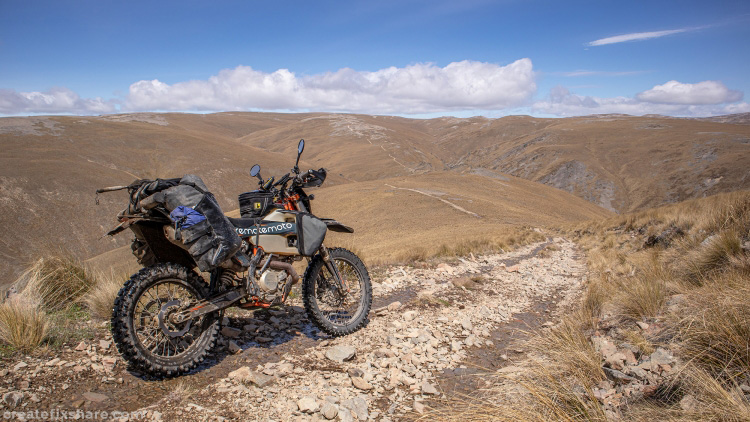KTM 500 Review - 25,000 km
This is a 25,000 km review on the 2018 Adventure Guide KTM 500 used as an adventure bike. The riding has been mostly multi-day rides laden with luggage containing camping and cooking equipment.
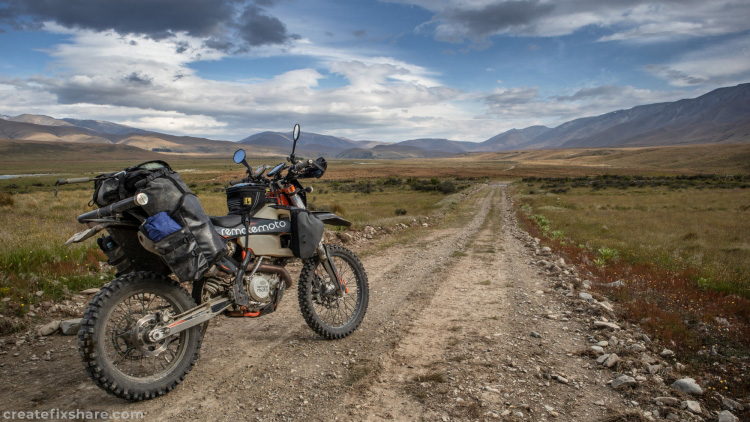
When I wrote the 10,000 km review on this bike (found here: KTM 500 10k review), I kept it fairly simple. The reason being, I didn’t feel 10,000 km provided enough seat time to write a comprehensive review. Now however, with 25,000 km under my belt, I’ve gained a great deal of knowledge about the KTM 500 and I can provide a more detailed and comprehensive review.
General Overview of the KTM 500 as an Adventure Bike
For those of you who enjoy adventure riding on a lightweight bike, the KTM 500 should be considered a solid candidate. Off the showroom floor, there are only a few modifications required to get the KTM 500 into an adventure-ready state. After the required adventure upgrades are in place, there is not a lot else to do other than enjoy the ample power of the 510cc engine, the excellent handling, and the impressive reliability.
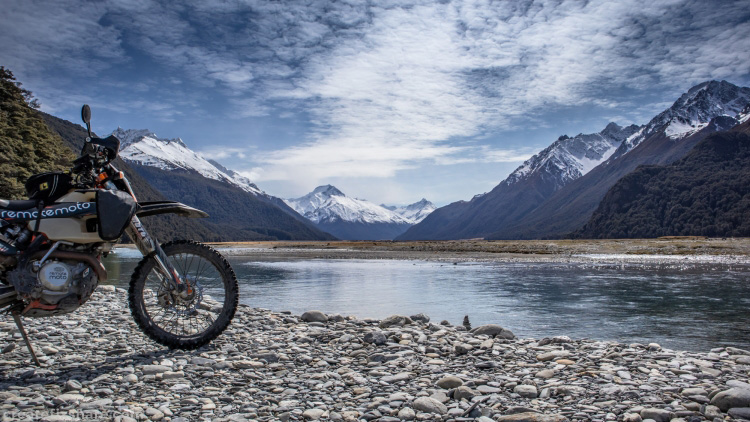
KTM 500 Reliability
Reliability is an area that is pretty important for any rider who enjoys sinking their teeth into remote tracks that are far off the beaten path. After 25,000km of some fairly demanding adventure riding all around New Zealand, the KTM 500 dispels all of the keyboard warrior’s negative comments and has proven to be an exceptionally reliable bike. It has never let me down, it starts well, it runs well, and it rides well – what more could you want?
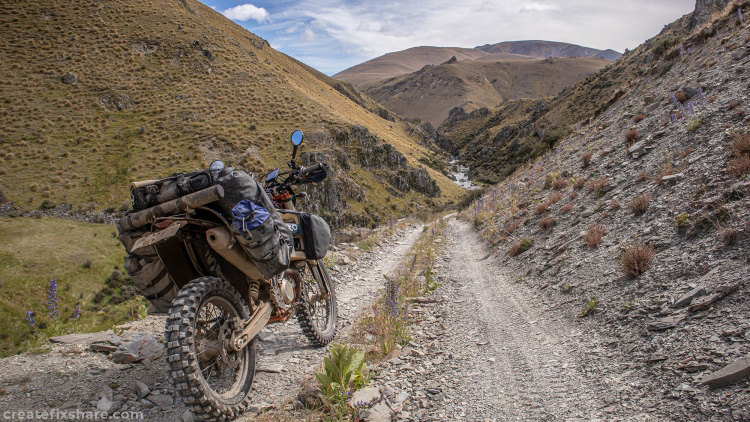
KTM 500 Maintenance
When I first mentioned I was shifting to a KTM 500 for adventure riding, I was bombarded with comments about the high maintenance costs compared to a typical adventure bike. To be honest I was expecting to pay a little more as the KTM 500 is a highly strung enduro bike with a focus on performance and handling - not long service intervals. The reality is, after 25,000km, the KTM 500 has only a slightly increased maintenance cost of a Suzuki DRZ400. Surprising, right?
Service Intervals
As to be expected, more regular oil changes on the KTM 500 are the main contributor to the higher maintenance costs than a typical adventure bike. However, many KTM 500 owners that are using their bikes for adventure riding, are performing oil changes around 2000 to 2500 km. This is about half the interval of a typical midsized adventure bike with oil change intervals around the 5,000 km mark - not really a big deal when you think about it.
Chain, Sprockets and Tyres
One of the other noticeable maintenance differences is the frequency of changing tyres, chain and sprockets compared to a typical mid-sized adventure bike. To be fair, this is squarely due to the 60+ horsepower on tap, and one's tendency to open that tap with overgenerous throttle use. Ride the KTM 500 gently and you can enjoy long life from the chain, sprockets and tyres. Ride the KTM 500 with a heavy throttle and you’ll end up changing chain and sprockets around the 6,000 km mark and get pretty good practise at changing tyres!
To be fair though, the KTM 500 power puts itself in the bracket of bikes that pack a lot of horsepower and will naturally be harder on tyres etc - a KTM 1190 is just one example.
Valve Clearances
Here’s one of the most surprising things regarding maintenance, after 25,000km, the valve clearances are have barely budged and are remain within spec. With the KTM 500 having a highly strung competition engine, I was expecting that I’d need to change shims regularly to keep the valve clearances in check. I was wrong - this was a pleasant surprise.
Ease of Servicing and General Maintenance
Ok this is one side of KTM I love. When working on Japanese bikes (like the DRZ400), the servicing is relatively straightforward but there are times when a lot of the bike needs to be dismantled to access, service or adjust something. For the KTM 500, being a competition bike, everything is designed to be quick to access, easy to remove/replace, and this makes it an absolute breeze to work on. I love this!
OE Part Prices
Contrary to popular belief, part prices for the KTM 500 are fairly reasonable across the board. Aside from a few exceptions, in most cases the KTM500 part prices are comparable to many Japanese bike part prices.
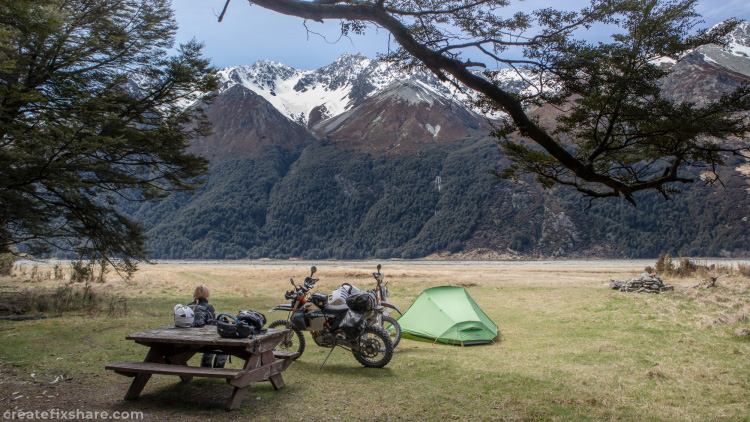
KTM 500 – The Good Stuff :)
Perhaps the best place to address the good stuff about the KTM 500, is rider satisfaction. The simple truth is, this bike puts a massive smile on my face. I'm sure any rider will agree, this is the most important part about owning a bike – riding fun and good times!
I know a lot of people will think I say only positive things about the KTM 500 because I own one. However, the simple reality is, if I didn't like the KTM 500 I would sell it and replace it with a bike I do like. After 25,000 km, I feel like I've gelled with this bike and have no urge to move on.
General good stuff
So overall there are a lot of good things. The engine and suspension perform beautifully and it’s a brilliant, lightweight adventure bike. It is reliable, easy to work on, and if you don't twist the throttle like a madman, it is actually very economic to run. Overall, the news is good my friends, this is a great bike!
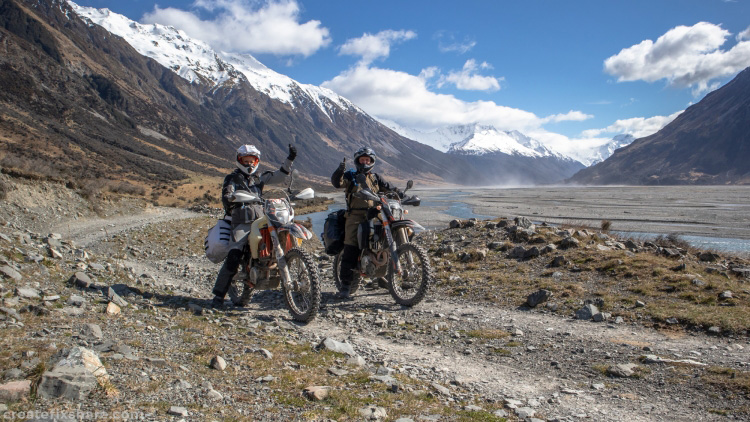
KTM 500 – The Not So Good Stuff :(
Ok, just so you know I don't have my KTM orange-tinted glasses on, the KTM 500 isn't perfect. Yep, I said it! Just like almost every other bike on the market, there are some not-so-perfect aspects.
KTM 500 Stock Road Kit
To ride the KTM 500 on the road legally, the bike is fitted with a road kit consisting of number plate and indicator holder, indicators, horn and handlebar controls. Numerous riders have reported that the number plate holder has been gobbled up by the rear wheel. I am one of those riders, this happened to me on the very first ride. An aftermarket tail tidy (or some modifications to the stock one) is a must to use the KTM 500 as an adventure bike and keep it road compliant.
The handlebar controls for the indicators and lights are not very refined. In fact the indicator toggle is very clunky to use and is often fiddly to return to the off position.
Due to the KTM 500 being solely designed for ultimate off-road performance, it is easy to see how little importance is placed on the boring design facet of road kit functionality. To be honest, this is a very small issue compared to what the KTM 500 delivers.
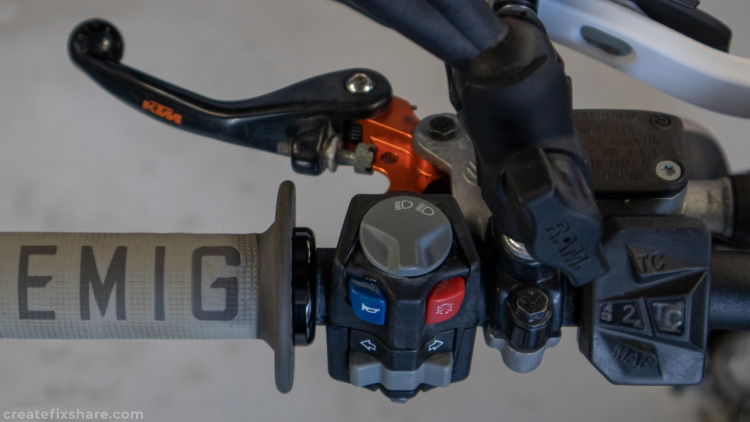
KTM 500 Stock KTM Kickstand
The stock stand serves its purpose well when the KTM 500 is used for its intended purpose – enduro riding and trail riding. Throw on the extra weight of adventure riding luggage then mix in repeated use of the stand for opening and closing gates, parking up to take photos, fuelling the bike up, stopping at cafes for a feed etc and the stock stand will exposes weakness - they are prone to failing in a number of ways. In 18 months, I have gone through three stock stands.
Does this reflect poorly on KTM? Not at all, the adventure riding loads carried are far beyond what the stock stand was designed for so this is really about a user issue rather than a design issue.
To try for a solution, I purchased the Pro Moto Billet Kickstand. This however turned out to be a bit of a lemon.
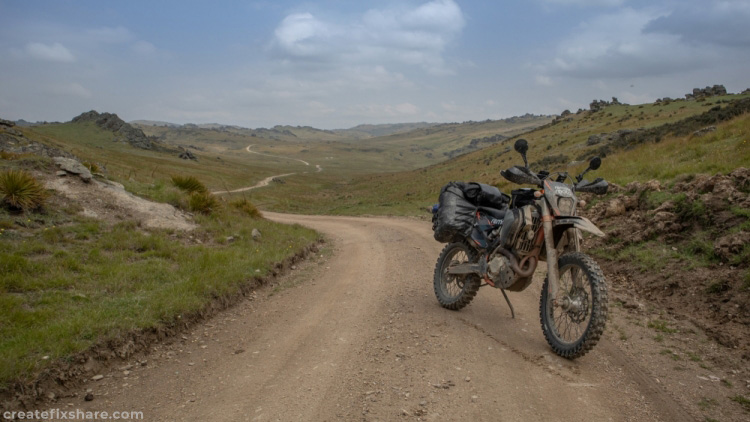
After extensive research, and asking other KTM500 riders what they use, there was no silver bullet to fix the kickstand issue. So, I did what many are doing, and that is buy an aftermarket kickstand. They are basically the same style as an OEM kickstand, but generally have better longevity. I have been using an aftermarket kickstand for over 18 months now, and it is still holding up well.
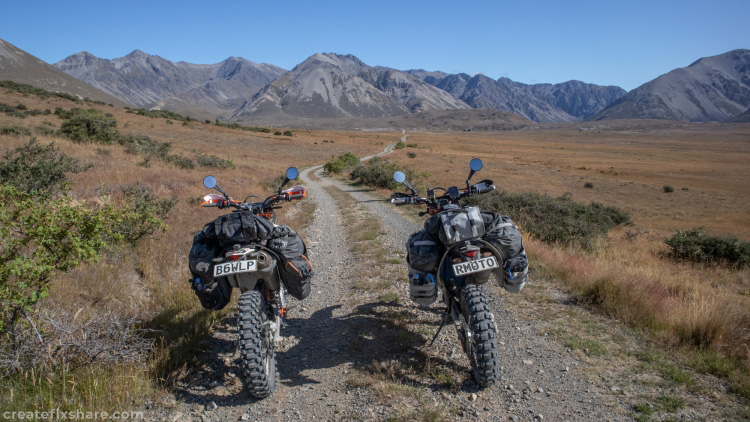
KTM 500 Wiring
The wiring loom on the KTM 500 can be subject to pressure points that rub through wires. This is commonly reported around the headstock or around the airbox area where three relays are housed.
I experienced wires rubbing around the airbox area that ended with two wires wearing through. The result was the severing of power to my lighting relay which left me with no lights or indicators. It was very simple to repair the worn wires and then re-route the loom to prevent any rubbing in the future.
The KTM 500 is not the first bike to experience wiring loom rubbing issues and will likely not be the last. Being aware of this and then remembering to check your loom status on your regular bike maintenance and checkovers will provide early detection and avoid any issues on the trail.
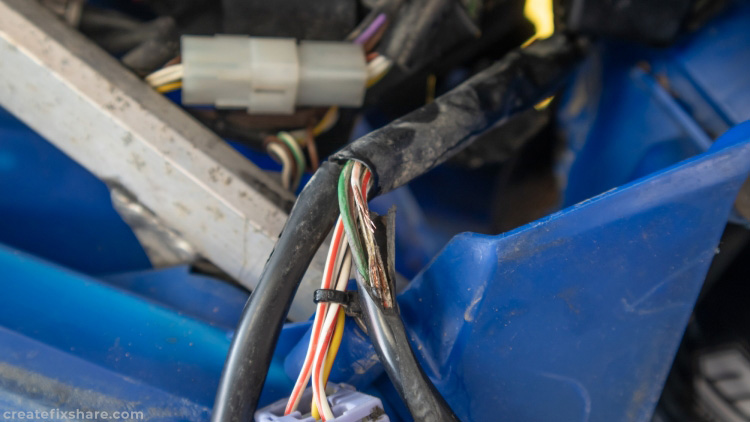
Aftermarket Tank Availability
Unfortunately the largest aftermarket tank available is only the 17L IMS fuel tank. For typical overnight or weekend adventure riding, 17 litres is generally enough. For extended trips through remote areas with limited fuel availability however, 17 litres isn’t enough and you are required to carry additional fuel.
I was spoilt with the 28 litre Safari tank fitted to the DRZ400. It was brilliant to be able to carry this much fuel on the New Zealand trips and it was a great starting point when travelling through Australia when I needed to carry 42 litres to get through some of the remote deserts.
I'm currently planning a return trip to Australia with similar fuel distances required. This is going to prove challenging to set up sufficient fuel carrying capacity on the KTM 500. It’s not impossible, but challenging nonetheless.
This shouldn't be really viewed as a negative towards KTM as the KTM 500 was not designed as an adventure bike. Generally, we look to aftermarket fuel tank manufacturers to provide larger tanks when bikes are used for adventure riding. Who knows, perhaps a larger tank will hit the market in the near future now that more and more people are using the 500 as an adventure bike.
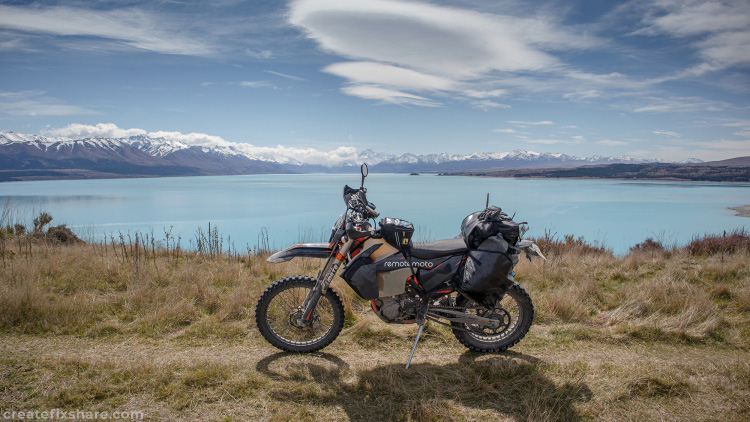
Stock Seat
The following statement will likely not surprise anyone - the stock seat is horrendously uncomfortable! Anyone buying an enduro bike with the intent to use it for adventure riding knows that you either have to refoam the seat, or replace it with an aftermarket seat. This is pretty much common knowledge and shouldn't really be viewed as a negative, I'm just noting it down for completeness of this review.
Exhaust Bushings
Depending on the luggage you use, if your luggage lays against the exhaust, you will likely find the two exhaust bushes will slog out and need replacing. In 25,000 km I have only had to replace one set of bushes, and to me that's not too bad.
Stock Chain Slider
The chain slider (by the counter shaft sprocket) is subject to premature wear. At 25,000 km I have gone through three stock KTM chain sliders. The replacement intervals are a lot sooner than other bikes, however to be fair, the KTM 500 stock chain slider is fairly low cost meaning it’s not the end of the world. Additionally, TM Designs produce a longer life chain slider kit that includes all three chain slider components.
Countershaft Dome Washer
The OEM dome countershaft washer is made of a mildly heat treated material. When the countershaft bolt is tightened to OEM spec, the dome washer is forced beyond its tolerable yield limits and in turn it becomes deformed - permanently. It is then unable to maintain the thrust pressure required to keep the sprocket tight to the splined shaft. Two different failures then follow:
A - the O-ring is allowed enough clearance that it begins seeping
B - sprocket backlash can occur on the splined countershaft
Sounds bad right? Well, not really. This is a commonly known issue that has a simple fix. By replacing the OEM countershaft dome washer with an aftermarket washer made of a material that can tolerate the deforming and continue to provide adequate thrust pressure, this avoids the two issues mentioned above.
Most commonly, the Dirt Tricks brand dome countershaft washer is installed, which has a cost of around $25. I put the Dirt Tricks dome countershaft washer on my KTM 500 from new and have not had either of these issues.

Every bike has a few quirks to some degree, the ones mentioned above for the KTM 500 are pretty minimal and insignificant when you think about it.
KTM 500 Review in Closing
The KTM 500 has a long list of impressive features that makes it overall, an exceptional bike. I have had some of my best riding experiences on the KTM 500 and I look forward to hitting the start button each and every time I head off. Switching to the KTM 500 as my primary adventure bike has been the best decision I have made in my riding career.
